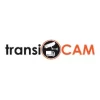
[BACK]
Tracking Fleet Transportation

Tracking fleet transportation involves monitoring and managing the movement of vehicles within a fleet. This process can include real-time tracking, route optimization, maintenance scheduling, driver management, and data analysis. Here are some key components and best practices for effectively tracking fleet transportation:
GPS Tracking Devices:
Fleet Management Software:
Telematics:
Communication Tools:
Dashcams and Sensors:
Geofencing:
Data Integration:
Driver Training and Safety:
Preventive Maintenance:
Route Optimization:
Regulatory Compliance:
Cost Management:
Assessment and Planning:
Vendor Selection:
Installation and Training:
Monitoring and Optimization:
By effectively tracking fleet transportation, organizations can enhance operational efficiency, improve safety, reduce costs, and provide better service to customers.
We engaged Geosoft in mid-2023 as they have a reputation for API integration within the Telematics s . . . [MORE].

We all have been VERY pleased with John's vigilance in monitoring our system and his quick and . . . [MORE].

FIVE STARS + It's true, this is the place to go for your GeoTab needs. In my case, Justin fixed . . . [MORE].

We were in desperate need of help because our former GeoTab Development agency left us hanging with . . . [MORE].

Just to say thank you for all the hard work. I can't express enough how great it's been to . . . [MORE].

Fleet tracking is an essential tool for businesses that manage a fleet of vehicles, offering a range of benefits that enhance performance and efficiency. Here’s a detailed look at how fleet trac
"Technical Fleet Navigation" can refer to various aspects of managing and directing a fleet of vehicles or vessels, including logistical planning, route optimization, tracking, and ensuring
Fleet dispatch innovations involve the use of advanced technologies and methods to optimize the management and operation of vehicle fleets. Key innovations include: Telematics Systems: These